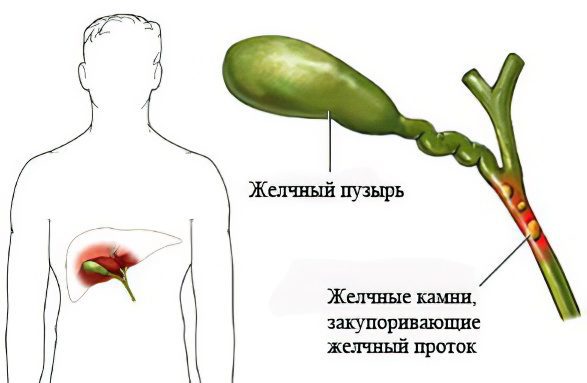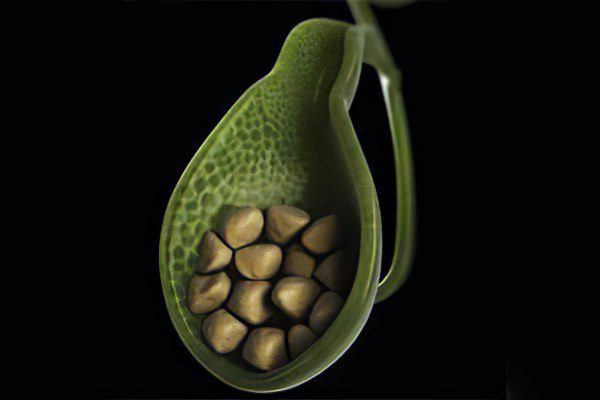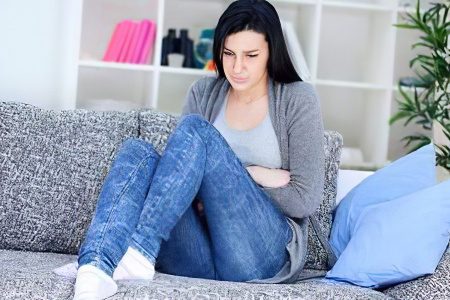Contents
Cholecystitis is an inflammatory process in the gallbladder, most often provoked by infection of the organ with intestinal microflora against the background of a violation of the outflow of bile through a clogged cystic duct. Cholecystitis is usually a complication of cholelithiasis. The gallbladder is located next to the liver and is actively involved in the process of digestion. Bile exits through the small intestine, but sometimes there are problems with evacuation and the bile collects in the gallbladder, resulting in severe pain and an increased risk of infection.
As a rule, the disease occurs in combination with cholangitis – inflammation of the bile ducts. Cholecystitis is a common surgical pathology, especially among middle-aged and older women – they get sick three to eight times more often than male peers.
The main causes of gender predisposition to cholecystitis:
Chronic compression of the gallbladder during pregnancy provokes long-term consequences – an imbalance of cholesterol and bile acids, and, as a result, stagnation of bile;
Features of the hormonal metabolism of women – it has been proven that progesterone, which is produced in large quantities during pregnancy and menopause, and other female sex hormones negatively affect the functioning of the gallbladder;
Women tend to be fond of diets, and severe food restrictions disrupt the motility (contractility) of the gallbladder.

The risk group, regardless of gender and age, includes people who have previously had:
Intestinal and / or liver infections;
Parasitic diseases (helminthic and protozoal invasions, localized stationary or at one of the stages of development in the intestine and / or liver);
Gallstone disease (GSD) with obstruction (blockage) of the cervix and / or damage to the mucous membranes of the gallbladder;
Diseases that disrupt the blood supply to the walls of the gallbladder.
A reflex connection between the pathologies of the gallbladder and anatomically unrelated abdominal organs has been proven – these are the so-called viscero-visceral reflexes. All of the above causes of cholecystitis are due to either a violation of the patency (obstruction) of the gallbladder, or a violation of its motility (dyskinesia).
According to the etiological basis, two large nosological groups of cholecystitis are distinguished:
Calculous (lat. Calculus – stone);
Noncalculous (stoneless).
Symptoms of cholecystitis
The initial symptoms of cholecystitis are usually sharp pains in the right side below the ribsthat appear unexpectedly. The reason for this is a stone that blocks the cystic duct. As a result, irritation and inflammation of the gallbladder develops.
The pain goes away after some time on its own or after taking painkillers, but in the future it gradually increases, and then it becomes regular. There is a development of the disease, which is accompanied by high fever, vomiting and nausea. The patient’s condition continues to deteriorate.
Stops the normal flow of bile into the intestines, a sign of which is icteric coloration of the skin and eye sclera. Prerequisites for jaundice is precisely the presence of stones that block the bile ducts. The severity of the pathogenesis is characterized by the patient’s pulse: usually the heart rate is from eighty to one hundred and twenty – one hundred and thirty beats per minute (or even higher), which is a serious sign, meaning that dangerous changes have occurred in the body.
As for the chronic form of cholecystitis, the signs may not particularly appear, in the future the disease may make itself felt in a more advanced form or take an acute form. In this case, only treatment in a special medical institution will avoid deterioration of the condition.
Nausea with cholecystitis – a common symptom. Nausea is a condition that usually precedes the gag reflex. In some cases, nausea and vomiting is a protective reaction of the body to intoxication. With cholecystitis, nausea and vomiting are always part of the pathogenesis of the disease.
Nausea in cholecystitis should be differentiated from similar symptoms in other diseases and pathologies:
Diarrhea (diarrhea) with cholecystitis observed very often. Diarrhea, constipation, bloating are invariable signs of diseases of the gastrointestinal tract, including cholecystitis. The sudden appearance of stool disorder during the treatment of cholecystitis indicates a complicated course of the disease.
Causes of cholecystitis

The causes of the disease can be very different, but most often cholecystitis occurs due to the accumulation of stones in the cystic duct, body and neck of the gallbladder, which makes it difficult for bile to flow out. The cause can also be some kind of injury or infection, as well as the presence of such serious diseases as diabetes mellitus, however, here cholecystitis will manifest itself as a complication of an existing pathology, and not as an independent disease.
The result of all of the above can be an acute form of cholecystitis with an inflamed gallbladder. The chronic form of the disease is usually observed in cases where irritation does not subside for a long time and is protracted, as a result of which the walls of the organ become denser.
An attack of cholecystitis

Attacks are characteristic of both primary cholecystitis and exacerbations of the chronic form of the disease. Harbingers of seizures are discomfort in the abdomen after taking fatty, spicy foods or alcohol.
Symptoms of an acute attack of cholecystitis:
Sharp cramping pain in the right hypochondrium, epigastrium or navel;
Nausea and vomiting, gas belching, bitter taste in the mouth;
Subfebrile or febrile body temperature (37-38 0 C or 38-39 0 FROM).
How to relieve an attack of cholecystitis?
To stop an attack of cholecystitis, you must:
Call an ambulance;
Lie down in bed and apply cold to the stomach;
Take an antispasmodic (no-shpa) and an analgesic;
To reduce nausea, drink mint tea or non-carbonated mineral water at room temperature;
In the presence of vomiting, ensure the collection of vomit for analysis.
Complications and consequences
The acute form of cholecystitis without adequate therapy becomes chronic with periods of exacerbation and remission. And chronic diseases are difficult to treat, since other organs are involved in the pathogenesis. The advanced form of cholecystitis is diagnosed in 15% of patients. It can result in gangrene, biliary fistulas that connect the intestines, kidneys and stomach with the gallbladder, obstructive jaundice, abscess, acute pancreatitis, and sometimes sepsis.
Consequences (prognosis) of calculous and non-calculous cholecystitis:
The prognosis of uncomplicated calculous cholecystitis is favorable. After intensive treatment, the clinical picture may not appear for a long time. Cases of complete recovery are known. In complicated forms of calculous cholecystitis, the prognosis is more cautious;
The prognosis of non-calculous cholecystitis is uncertain. With such a disease, one should be wary of purulent and destructive forms of inflammation.
Treatment and diet
Treatment of acute cholecystitis and chronic disease in the acute stage is carried out in a surgical hospital. Methods of treatment are selected individually according to indications.
Conservative treatment of cholecystitis:
Antibiotics, the choice depends on the effectiveness of the drug;
Antispasmodics to stabilize the function of the passage of bile into the small intestine;
Cholagogue with hypotension of the gallbladder and normal patency of the bile duct;
Hepatoprotectors to maintain liver function.
Surgical treatment of cholecystitis:
Cholecystectomy – complete removal of the gallbladder, carried out immediately with symptoms of diffuse peritonitis and acute bile obstruction, in other cases – in a planned manner.
Diet for cholecystitis
During an acute attack, the patient is given only a warm drink in small portions. The volume of liquid is up to one and a half liters per day.
After relieving acute pain, the diet includes cereals, kissels, steam cutlets from lean meat or fish, a chicken egg in the form of an omelet, and white bread.
Diet for cholecystitis:
You need to eat in small portions (5-6 times a day) to maintain the rhythm of bile production;
Dinner is recommended no later than 4-6 hours before a night’s sleep.
The diet of patients with cholecystitis should include:
Animal products with a minimum amount of fat, finely chopped and steamed;
Vegetable products that do not contain coarse fiber, rich in vitamins and trace elements.
With cholecystitis, it is forbidden to eat the following products:
Canned, pickled, smoked, salted, pickled, fatty, astringent;
Provoking indigestion and gas formation (milk, legumes, carbonated drinks);
Changing the pH of the environment of the stomach (alcohol, sorrel, spinach, citrus fruits).









